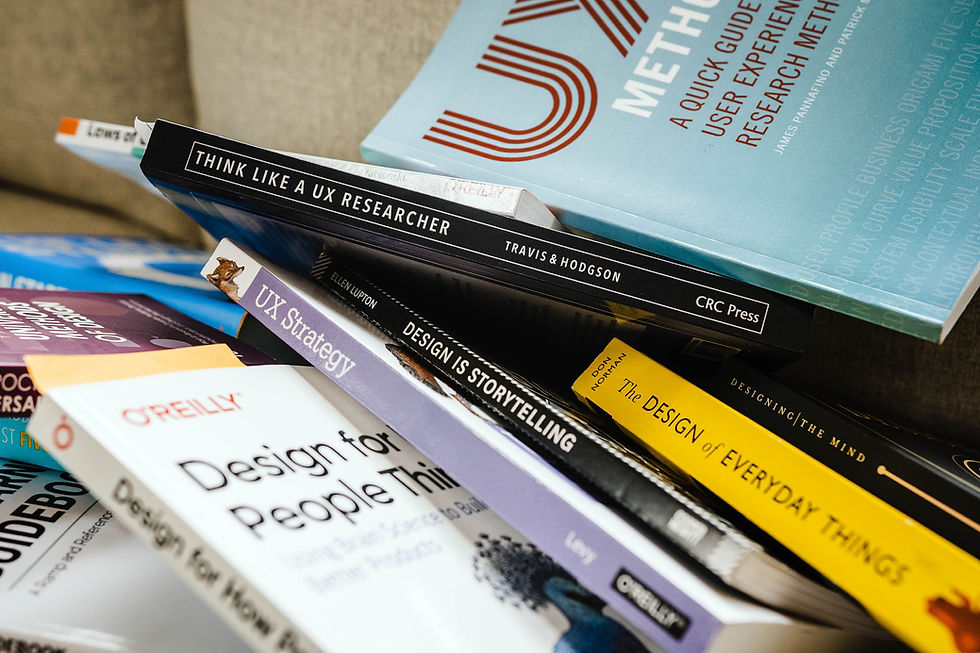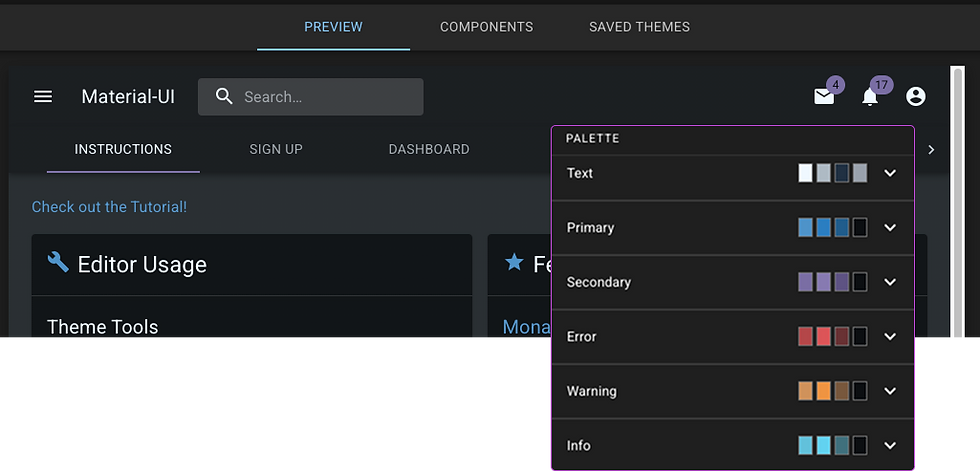Literature Review: Neurodiversity Design
- Curtis Blair
- Nov 5, 2023
- 4 min read

Neurodiversity Design
Emphasis on Autism Spectrum Disorder
User Experience Design (UXD) shapes individuals' interactions with digital products and services. This literature review examined UX design recommendations and strategies to identify methods for developing a Neurodiversity Design practice.
Resource materials for the review were limited to online articles, blogs, and social media to gather common knowledge, experiences, and opinions. Further research derived from academic sources would be beneficial to triangulate diverse perspectives and enhance the rigor of the data synthesis process.
Recommendations
The literature review revealed several disciplines offer fundamental design practices that could be adopted to address specific concerns related to neurodiversity. The multidisciplinary nature of UXD is a mixture of borrowed techniques and methodologies from cognitive psychology, graphic design, technical communication, computer science, etc., which provides a framework for adopting varied practices into a new design discipline.
Neurodiversity Design Foundational Principles
Foundations principles are guidelines that offer a place to start and then build on to develop conceptual solutions and experiences.
SCRAP recommendations
Contextual Objectives
Transdisciplinary Approach
SCRAP - Simple, Contrast, Repetition, Alignment, Proximity
A good starting principle for Neurodiversity Design is the mnemonic SCRAP, derived from technical writing, visual communication, and graphic design, emphasizing comprehension, discoverability, and user-advocacy. The mnemonic encapsulates various design facets like color management, plain language, descriptive links, and consistent layouts. To fully support individuals, designers must go beyond understanding universal design principles and simple research activities.
Contextual Objectives
The often-quoted advocacy slogan "When you meet one person with Autism, you've met one person with Autism" concisely challenges society to move past stereotypes. Designers must embrace cognitive and behavioral psychology to create user-centric and inclusive experiences that adapt to Neurodiversity Design, which means understanding challenges related to sensory differences and executive dysfunction.
Contextual Objectives for Conceptual Designs
Minimizing research and design assumptions
Develop multiple inclusive design solutions
Collaborating with actual users through co-participatory workshops
Advocating and adding value to the community
The final principle has the designer transcend design and user research to move forward into leading team efforts, working with different experts in various fields to solve complex problems.
Transdisciplinary Approach
The value of UX design is its transdisciplinary approach of collaborating and combining various disciplines by emphasizing their unique contributions, synthesizing insights to develop conceptual solutions, and then sharing new methodologies and practices. Designers can facilitate multiple team engagements transcending discipline boundaries by understanding the interactions of systems. Disciplines like Futures Thinking, Holistic Design, and Systems Thinking provide exercises to explore and integrate insights into design solutions.
For instance, Futures Thinking can guide the long-term vision of a product and help develop design goals while aligning business needs with user advocacy through UX design and research. Inclusive Design and Trauma-Informed Design can establish inclusive language and branding guides that encourage psychologically safe environments affecting aesthetic considerations drawn from Graphic Design. Understanding Systems Thinking provides a lens for a holistic perspective of customer service, guiding direct, concise, plain language while accommodating different communication styles.
Design Objectives and Design Disciplines
User Advocacy - UX Design, Cross-Cultural Design
Design Goals - Futures Thinking, System Thinking
Language - Technical Writing, Inclusive Design
Aesthetic - Graphic Design, Visual Communication
Consistency - User Interface Design, Human-Centered Design
Personalization - Human-Computer Interaction, UI Design
Navigation/ Wayfinding - Information Architecture
Environment - Inclusive Design, Universal Design, Interior Design
System Support - Computer Science, HCI
Psychological Safety - Accessibility, Trauma-Informed Design
A transdisciplinary approach emphasizes shared design principles and objectives, revealing how different specialties build conceptual designs greater than the sum of their parts.
Additional Reading and Resources
Great resource for UI design recommendations
Good educational resource
Great research starting point
Defining Transdisciplinary UX Design process
Reduce Cognitive Overload Heuristic
Neurodiversity Design Resource to address executive dysfunction
Appendix - Methodology
Horizon Scanning
I started the project with a horizon scanning activity to collect initial data points to understand the problem space better and form research questions. After developing research objectives, I continued horizon scanning throughout the project timeline to collect various experiences and perspectives.
Annotated Bibliography
I summarized the collected resource material to identify reoccurring themes, topics, and obstacles. Summaries helped refine research questions and identify potential areas for future research.
Qualitative Tagging
I reviewed the collected resource materials and started a mixed deductive/inductive tagging scheme to highlight instances of design tips, practices, obstacles, and miscellaneous insights. I also created an Analytical Memo capturing my thoughts and questions during tagging.
Tagging Analysis
I compiled various tags and conducted a card sort to group related items to identify categories for recommended design principles.
Community Participation
I sought additional resource recommendations from my Slack and LinkedIn communities but needed more engagement. I received a few resource recommendations, which I summarized and triangulated with the initial tag analysis.
AI-assisted research
I experimented with Notion AI and ChatGPT, using AI-generated research as an additional data point to uncover commonly known design principles and common assumptions regarding neurodiversity. I used the summarized findings to triangulate and synthesize design tips into foundational principles.
Affinity Mapping
I used Miro to map related design tips and then labeled the categories based on the purpose of the design activity. I then used the labels in a card sort to identify related disciplines that already offered design guidelines. The map produced an outline for a transdisciplinary approach.
Synthesis
I reviewed project activities and outcomes mapping recommendations with existing disciplines' design principles, comparing them for commonalities. After compiling commonalities, I gathered future effort recommendations for expanding the project. Finally, I synthesized the findings into three foundational design principles for Neurodiversity Design.


